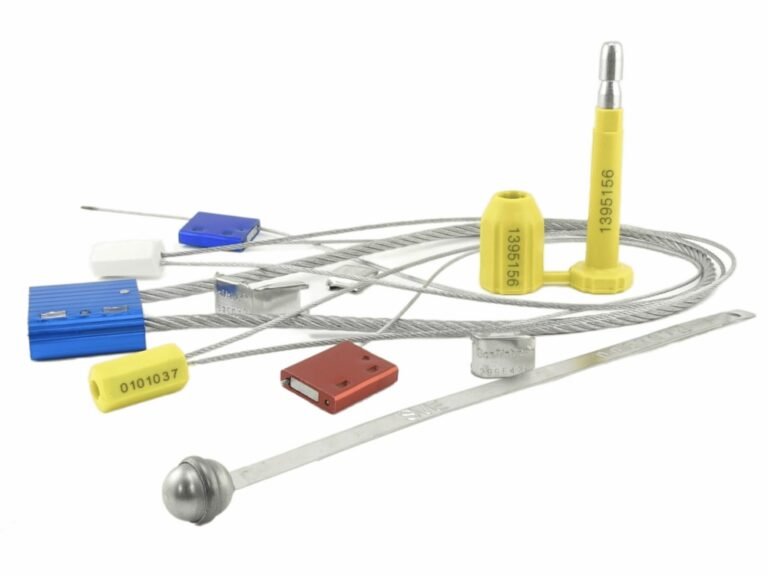You're buying security seals, but are you buying the right kind of security? Choosing the wrong seal type can leave your assets completely exposed during their most vulnerable moments, even with a plastic seal locked in place.
The choice between an indicative and a barrier seal is a strategic decision about time. Indicative seals provide an "instant snapshot" of integrity for frequently checked items. Barrier seals offer "delayed deterrence," a robust physical barrier for assets left unsupervised for long periods.
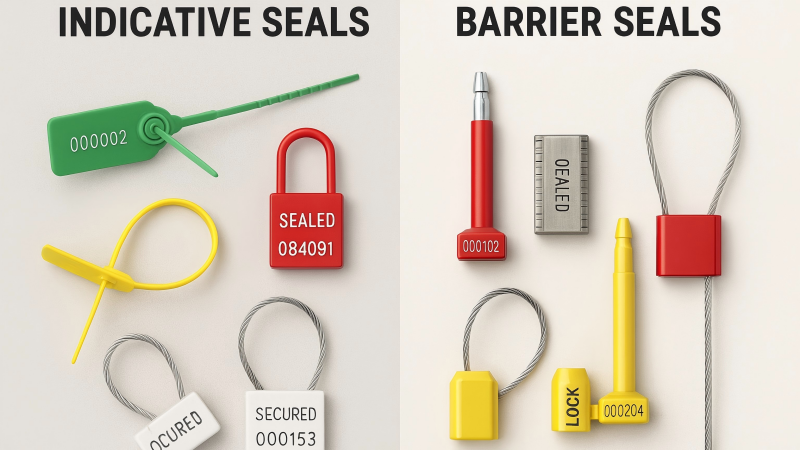
When I consult with clients, I move the conversation away from just breaking strength and toward a more critical variable: time. Your choice isn't about physical strength in a vacuum; it's about your operational strategy. An indicative seal excels at providing an "instant snapshot." It instantly answers the question, "Is this container okay right now?" This is perfect for short-haul routes with many checkpoints. A barrier seal, however, is a form of "delayed deterrence." Its strength is designed to do one thing: maximize the time and effort an attacker needs to breach it, increasing their cost and risk of being caught. It protects assets during the long, lonely hours when no one is watching. The ultimate question I ask my clients is this: How many hours will your asset be alone and at risk? Your answer will tell you whether you need to buy "instant truth" or "security over time."
What's the Real Difference Between an Indicative and a Barrier Seal?
Do you believe a barrier seal is just a "stronger" indicative seal? This oversimplification misses the fundamental difference in their design philosophy and intended purpose, leading to critical misapplications.
The real difference lies in their function. An indicative seal is designed to break easily but show clear evidence of tampering. A barrier seal is designed to physically resist tampering with a significant barrier, acting as a powerful deterrent.
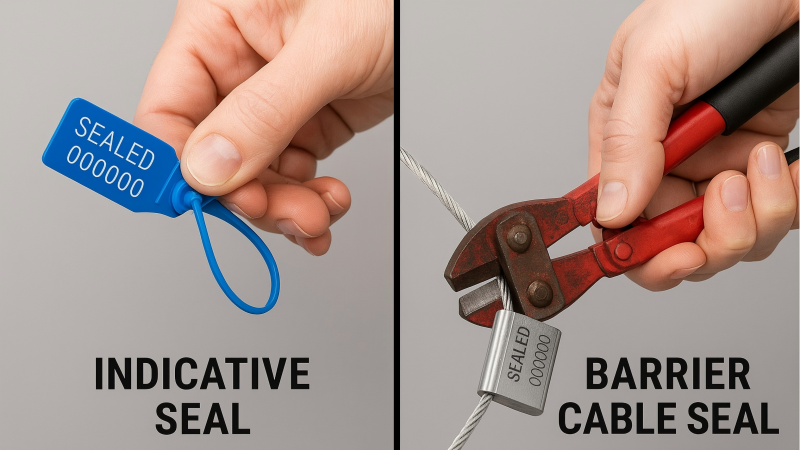
Let's move beyond "weak" vs. "strong" and think in terms of strategy. A seal's job is to communicate information. The key is understanding what information each type is designed to communicate, and when.
| Feature | Indicative Seal ("Instant Snapshot") | Barrier Seal ("Delayed Deterrence") |
|---|---|---|
| Primary Mission | To provide instant, clear evidence that any attempt at entry was made. | To physically delay and deter an entry attempt for as long as possible. |
| Design Philosophy | Low breaking strength. The focus is on the "tattle-tale" function. It breaks easily but shows it. | High breaking strength. The focus is on being a formidable physical barrier. |
| ISO 17712 Class | I for Indicative. | S (Security) or H (High Security). |
| Core Question it Answers | "Was this container opened since the last checkpoint?" | "Can this container withstand a determined attack while unsupervised?" |
| Strategic Value | Process Security. Its strength is in a system of frequent checks. | Asset Security. Its strength is inherent in its physical construction. |
When is an Indicative Plastic Seal 'Good Enough' for Your Business?
Is spending more on a heavy-duty seal always the smarter choice? Absolutely not. For many operations, an indicative seal is not just 'good enough'—it’s the more intelligent and cost-effective solution.
An indicative seal is the right choice for high-volume, short-duration logistics where the security is provided by the process, not just the seal. If you have frequent checkpoints and low-value goods, an indicative seal is your ideal tool.

The indicative seal is the hero of "process-based security." Its value is realized in systems where the "snapshot" it provides can be checked frequently.
Use Case 1: Internal Logistics and Retail Totes
For goods moving between a distribution center and a local retail store—a journey of a few hours with clear hand-off points—an indicative seal is perfect. The tote is sealed at the warehouse, and the seal's integrity is the first thing the store manager verifies. The short duration and trusted personnel minimize risk.
Use Case 2: In-Plant Processing
In food processing or pharmaceutical manufacturing, indicative seals are used on bins and containers moving between production stages. The goal is to ensure no cross-contamination or unauthorized additions occur between steps, which are often only minutes or hours apart.
Use Case 3: High-Volume Courier Services
For courier bags that are sorted at multiple hubs during an overnight journey, an indicative seal provides a clear audit point. Each scan at a hub can include a visual check of the seal, ensuring integrity at every step of its short journey.
The Tipping Point: Scenarios That Demand a Barrier Seal?
At what point does an indicative seal become a liability? The tipping point is when your cargo's unsupervised time and risk level surpasses the seal's ability to offer mere evidence and requires it to provide active deterrence.
A barrier seal becomes non-negotiable when your cargo is high-value, in transit for more than 24 hours, or crossing borders. In these scenarios, you are not just logging access; you are actively trying to prevent it.
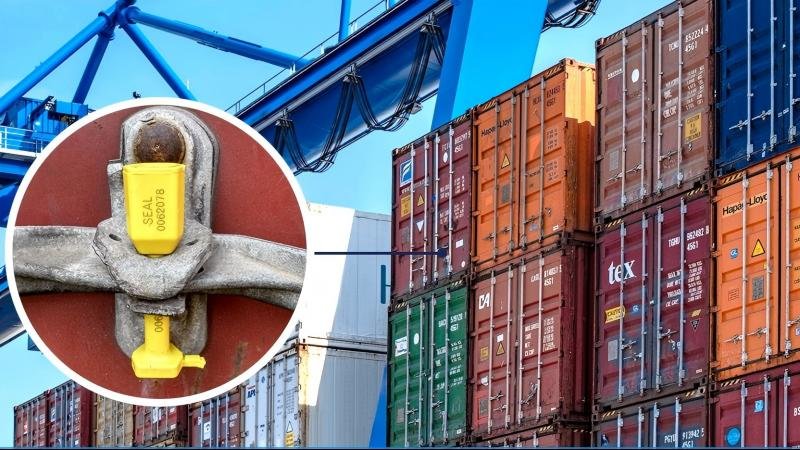
This is where we answer the ultimate question: "How many hours will my asset be alone?" If the answer is "many," or if the consequences of a breach are severe, you need to buy time.
Scenario 1: International Ocean Freight
A container on a ship could be unsupervised for weeks. The journey is long and passes through multiple ports. A low-strength indicative seal can be easily defeated and replaced. A high-strength barrier seal forces an attacker to spend significant time and use heavy tools, dramatically increasing their risk of being caught.
Scenario 2: High-Value Cargo Transport
When transporting pharmaceuticals, electronics, or other high-value goods via long-haul trucking, the vehicle will inevitably be left unattended at rest stops or depots. A barrier seal provides a robust physical barrier that deters all but the most determined criminals.
Scenario 3: Legally Defensible [Chain of Custody](
https://www.ncbi.nlm.nih.gov/books/NBK551677/)
For evidence, high-value raw materials, or customs bonding, you need a seal whose strength is certified, like by ISO 17712. A barrier seal's certified strength provides a much stronger position in any legal or insurance dispute.
Cost vs. Risk: A Practical Price Analysis of Both Seal Types?
Is the higher price of a barrier seal a cost or an investment? The answer becomes obvious when you compare the price of the seal to the value of the goods it protects.
While a barrier seal may cost more upfront, its price is negligible when viewed as an insurance premium on your high-value cargo. The cost of a lost shipment will always be orders of magnitude greater than the cost of the correct seal.
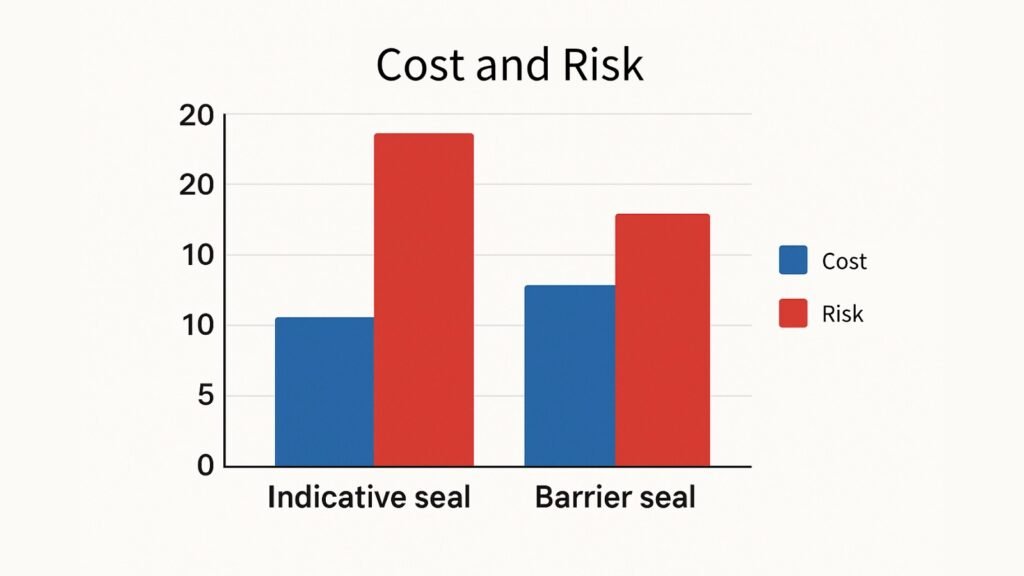
Let’s break this down with a practical example. This is how I frame the decision for my clients to bring total clarity.
| Metric | Indicative Seal ("Snapshot") | Barrier Seal ("Deterrence") |
|---|---|---|
| Typical Unit Price | ~$0.15 | ~$0.50+ |
| Scenario | Sealing a pallet of goods | Sealing a pallet of goods |
| Value of Goods | $50,000 | $50,000 |
| Seal Cost as % of Cargo Value | 0.0003% | 0.001% |
| The Real Question | Am I willing to save $0.35 to leave a $50,000 shipment vulnerable on a long, unsupervised journey? | Is spending an extra third of a dollar a smart investment to physically protect a $50,000 asset? |
When presented this way, the choice is no longer about saving 35 cents. It's about making a rational, risk-based decision to protect a significant asset. The slightly higher cost is a rounding error; the added security is immense.
Your Indicative vs. Barrier Seal Decision Matrix?
Need a simple tool to make the right choice every time? This decision matrix helps you quickly assess your needs and select the appropriate seal level based on risk, time, and value.
Just answer three key questions about your shipment. Your answers will guide you to a logical, defensible, and secure choice, removing all guesswork from your procurement process.
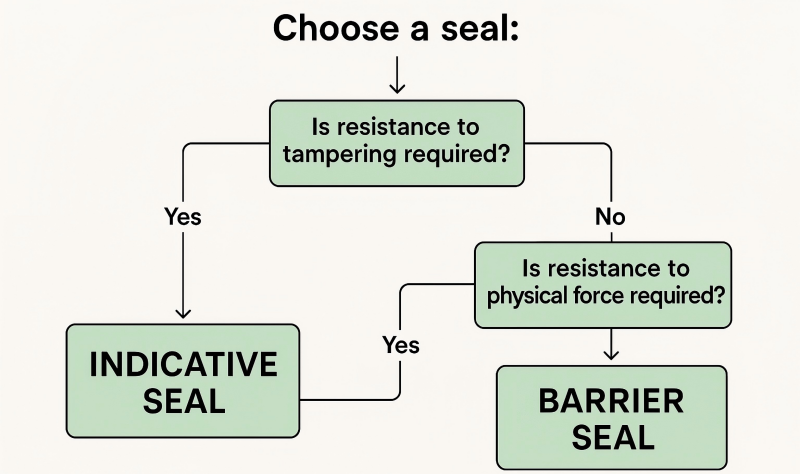
Use this simple matrix for any shipment.
- Time in Transit: Will the asset be unsupervised for more than 24 hours?
- NO -> Proceed to Q2.
- YES -> Choose a Barrier Seal.
- Cargo Value: Is the value of the cargo high enough that a loss would be a significant financial event for your company?
- NO -> Proceed to Q3.
- YES -> Choose a Barrier Seal.
- Process Frequency: Are there multiple, guaranteed checkpoints and scans within a 24-hour period?
- NO -> Choose a Barrier Seal.
- YES -> An Indicative Seal is likely the smart, cost-effective choice.
If your operation meets the criteria of short transit, low relative value, and frequent checks, an indicative seal is your tool. For anything else, you are buying "delayed deterrence," and that requires a barrier seal.
Conclusion
Your choice of seal is a choice of strategy. By asking "How many hours will my asset be alone?", you can correctly select between the "instant snapshot" of an indicative seal and the "delayed deterrence" of a barrier seal.
Get the Right Seal Strategy for Your Timeline
Whether your operation needs the instant truth of an indicative seal for high-frequency checks or the long-haul resilience of a barrier seal for unsupervised journeys, having the right tool is critical. At ProtegoSeal, we specialize in providing the high-quality, certified seals that match your security strategy to your real-world risks. Contact us to discuss your specific transit times and find the most intelligent, cost-effective solution for your business.

